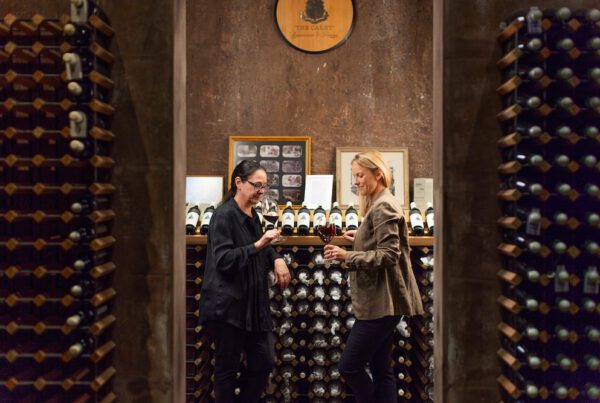
Austrade says the wine sector in India is a market to watch in the medium to longer term. Mark Morley and Bhavin Kadakia from Austrade provided this update on the market for Australian winemakers.
With a young population, increasing urbanisation and the position of wine among upper and middle class Indians as a ‘status choice’, India has parallels with other Asian markets where there is a growing acceptance and preference for wine among the upper and middle class.
India’s young people are showing an interest in wine. With more than 19 million new consumers entering the legal drinking age every year, wine has grown in recent years by 10 to 20 percent per annum, with sales of a relatively modest 32 million litres in 2016.
Wines are also making their way into functions and events including Indian marriages and are a particularly popular gift for status-conscious Indian consumers. Fundamentally, wine is seen as a sophisticated and stylish drink as compared to whisky, scotch and rum.
Estimates have put women as the major buyers of wine in the country – again, primarily to be used as gifts for other women.
Indians prefer red wine over white wine. Red is a status symbol among young urbanites.
In a country with a billion-plus population, wine has still only penetrated a small segment of the population. The exposure to new culture, growth in foreign tourists, overseas education and a rapidly changing demography are the main factors behind this higher consumption.
“Although traditionally – and even today – whisky and rum continue to dominate alcohol consumption in India, the increasing availability of locally produced and imported wine over the last decade has spawned significant consumer interest in wine.” – Economic Times of India
The imported wine market was about 475,000 cases in the Indian financial year (April 2016 to March 2017). Major consumption happens below a price of A$36 per bottle correlating to an import buying of A$2-3.5 per bottle. The number of wine importers in India is growing with the list of importers increasing every year with more than 300 wine importers in the country.
India has its own domestic industry, too, with Sula Wines, Indage and Grover Vineyards among the top Indian vineyards and wineries. Collectively, they have 90 percent of the market share and are (naturally) perceived as better value for money.
However, the Indian-reported trade data suggests that wine imports from the New World are growing with the top three wine suppliers to India: France, Italy and Australia. Chilean wines are also starting to penetrate the market in the entry level segment with strong competition likely at the lower end in coming years.
Australian wines have been growing at the fastest pace among imported wines – about 25 percent by volume and 30 percent by value. Australian brands seem to increasingly fit the bill for many consumers now choosing wine. There are more than 40 Australian wine labels in India including established brands like Penfold’s, Lindemans, Westend Estate, AVL, d’Arenberg, Jacob’s Creek, De Bortoli, McWilliams and Wines by Geoff Hardy.
In a market where makers and sellers have long been challenged, Jacob’s Creek has maintained a steady leading position in India over the past five years. Jacob’s Creek is the most-imported brand. In the case of wine imports in India, Jacob’s Creek is followed by Moet & Chandon, Sauvignon, Dom Perignon and Carlo Rossi.
Mumbai remains India’s largest wine consumption market. Delhi shows an evolved culture with higher share consumption of international wines over domestic wines, coupled with a higher propensity for wine spending than Mumbai. Consumers in these two cities show equal preference for both domestic and international wines across a range of styles, regions and varieties; there is a willingness to pay higher price points, pointing to a rapidly emerging wine culture.
Goa, on the other hand, displays a preference for consuming wines largely at home with a high prevalence of inexpensive Indian wines in their drinking portfolio.
Bangalore and Pune are also vibrant wine markets that can no longer be ignored.
Alcoholic sales and advertisements have been a bugbear for state governments in India for some time, with a strong thread of prohibitionism evident in many states. In India, alcohol advertisements are banned, which makes it hard for companies to advertise their brand directly. Alcohol is banned in Gujarat, Bihar, Nagaland and Lakshadweep with additional restrictions in many other states. These governments control the taxation, distribution and sale of alcohol. Brand/label registration is mandatory for the brand to be sold in the respective states and regions, and independent licences are required to product, bottle, store or retail all liquor products.
For Australian winemakers interested in the market, it is important to note that the customs duty on wine is 150 percent on CIF. Thus, the final cost to the consumer would be around 9 to 11 times of FOB in Mumbai; in Delhi around 7 to 8.5 times of FOB; and in Bangalore about 6 to7 times of FOB.
The hospitality sector (hotels, restaurants, catering, clubs and pubs) has a major market compared to the organised retail sector due to the Federal Government allowing duty-free import to hotels (equivalent to five percent of the average foreign exchange earned). This means that much of the alcohol consumed is on-premise in five-star hotels in major cities.
The Indian wine market segment is growing and offers Australian winemakers a longer term opportunity to engage at a mid-tier price level. Growth factors including the rising middle class, a trend towards wine rather than spirits, and the status associated with wine, mean that the market is on a strong trajectory, regardless of the significant tariff and non-tariff barriers to entry in the market.
The South Australian Government has launched a two-year wine education program in Mumbai and Delhi to raise the profile and position of South Australia in premium and ultra-premium wine segment. This will have flow-on effects for Australian wines generally.
Although Australian wineries shouldn’t compare the Indian wine market with China and expect similar growth patterns in the shorter term, India is a great, stable and longer-term opportunity for Australian wine.
Austrade India has a significant presence on the ground, with offices across north and south India, and three major offices in Chennai, Mumbai and Delhi. With 11 full-time staff looking after Australian food and beverage in the region, we are well placed to assist you in expanding your export to South Asia – and beyond.
We are keen to hear from you direct. We can assist in pulling together a market overview for you and your team, match you with relevant importers, distributors and retailers and prepare you to enter the Indian market.
Austrade is also launching a wine webinar for Australian wine stakeholders on 17 May which is free for any Australian company to attend. Get in touch to be involved.
Mark Morley is the Trade Commissioner, India and Pakistan. Email Mark.Morley@austrade.gov.au
Bhavin Kadakia is the Business Development Manager F&B in Mumbai. Email Bhavin.Kadakia@austrade.gov.au









The opportunity is large and the barriers many. It takes deep pockets to establish and build brands in India.